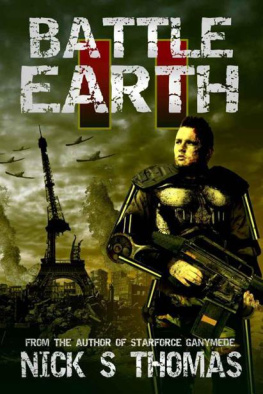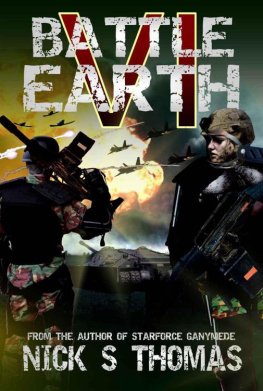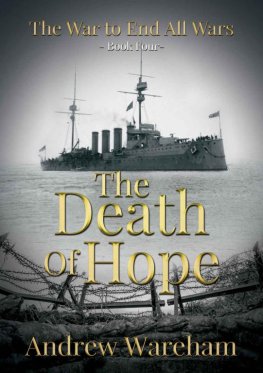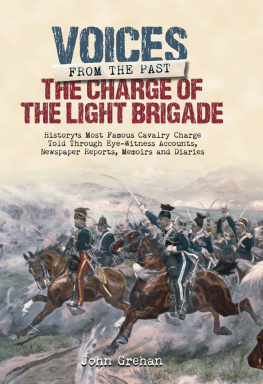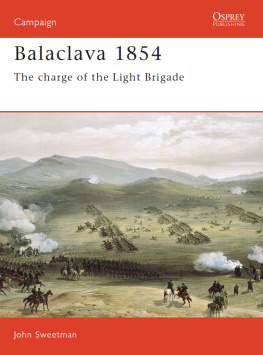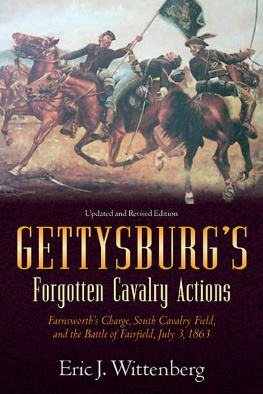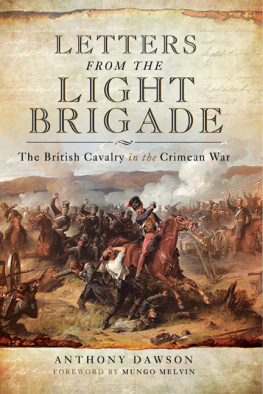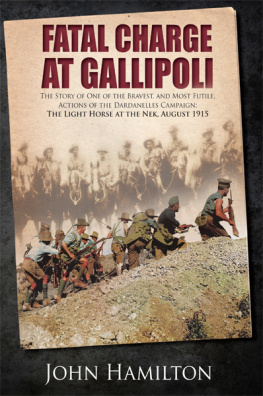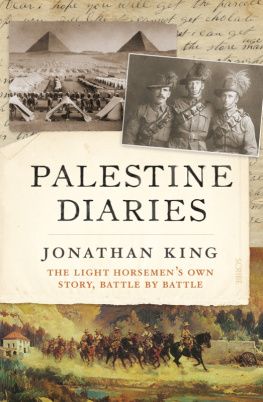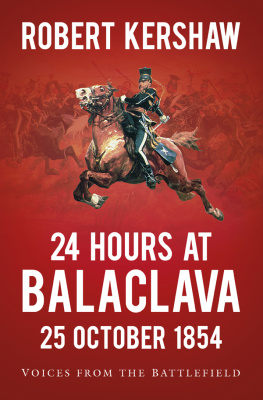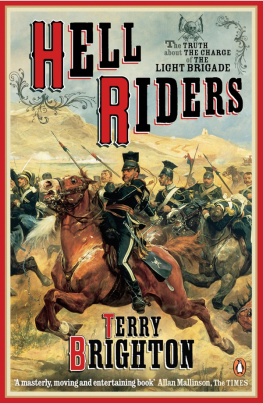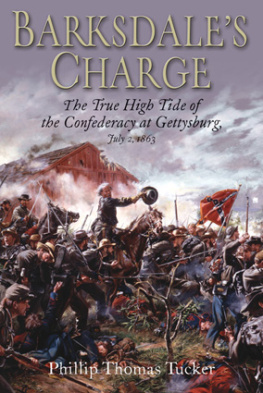INTO THE VALLEY OF DEATH
INTO THE VALLEY OF DEATH
THE LIGHT CAVALRY AT BALACLAVA
NICK THOMAS
First published in Great Britain in 2020 by
PEN AND SWORD MILITARY
An imprint of
Pen & Sword Books Limited
Yorkshire Philadelphia
Copyright Nick Thomas, 2020
ISBN 978 1 52672 292 8
eISBN 978 1 52672 293 5
Mobi ISBN 978 1 52672 294 2
The right of Nick Thomas to be identified as Author of this work has been asserted by him in accordance with the Copyright, Designs and Patents Act 1988.
A CIP catalogue record for this book is available from the British Library.
All rights reserved. No part of this book may be reproduced or transmitted in any form or by any means, electronic or mechanical including photocopying, recording or by any information storage and retrieval system, without permission from the Publisher in writing.
Typeset in Times New Roman 10.5/13 by
SJmagic DESIGN SERVICES, India.
Pen & Sword Books Limited incorporates the imprints of Atlas, Archaeology, Aviation, Discovery, Family History, Fiction, History, Maritime, Military, Military Classics, Politics, Select, Transport, True Crime, Air World, Frontline Publishing, Leo Cooper, Remember When, Seaforth Publishing, The Praetorian Press, Wharncliffe Local History, Wharncliffe Transport, Wharncliffe True Crime and White Owl.
For a complete list of Pen & Sword titles please contact
PEN & SWORD BOOKS LIMITED
47 Church Street, Barnsley, South Yorkshire S70 2AS, United Kingdom
E-mail:
Website: www.pen-and-sword.co.uk
Or
PEN AND SWORD BOOKS
1950 Lawrence Rd, Havertown, PA 19083, USA
E-mail:
Website: www.penandswordbooks.com
Acknowledgements
There have been many histories of the Charge and this latest naturally owes a great deal to all that have gone before. It owes even more to the veterans of the Light Brigade and the many eyewitnesses to the events of 25 October who recorded what they did or saw in such meticulous detail that they speak to us still, over 150 years on.
Of the modern historians, Canon William M. Lummis and Kenneth G. Wynn were trail-blazers. It was their work which first listed all of the members of the Light Cavalry Brigade and gave a profile of each man. They identified many of the Chargers and gathered together a collection of images of the heroes of the Charge Honour the Light Brigade was one of my earliest purchases and is greatly treasured in my library.
Other seminal works include Roy Duttons Forgotten Heroes: The Charge of the Light Brigade and Lawrence Criders In Search of the Light Brigade: A Biographical Dictionary of the Members of the Five Regiments of the Light Brigade from January I, 1854 to March 31, 1856 , while the late Mr E.J. Boys built a vast library of information on the brigade, which his son, Philip Boys, and Roy Mills are currently putting on line. Lives of the Light Brigade is a truly amazing archive, which has been made available to all.
The author freely acknowledges the invaluable work by these eminent historians and the many authors cited in the bibliography, from the Victorian journalists who had the foresight to record the words of living heroes, through to the twentieth and twenty-first century writers Cecil Woodham-Smith, Mark Adkin, Terry Brighton, James W. Bancroft, John Grehan, et al.
Sincere thanks are due to all.
Introduction
It is my intention to provide only a brief overview of the events leading up to the Battle of Balaclava, as well as providing a general account of the various phases of the battle itself.
The Battle of Balaclava was fought on 25 October 1854, following a buildup of Russian troops which threatened the harbour and fortifications previously captured by the British. Here the British landed both reinforcements and provisions for the siege of Sevastopol.
There survive many near contemporary accounts of the Charge penned by combatants and eye-witnesses while memories were still fresh. These include contemporary letters, personal diaries, official communiques and despatches, and early newspaper accounts from correspondents such as William Howard Russell. His was not the first report to reach our shores. The advent of the electric telegraph enabled war news, once it reached Belgrade, to be transmitted to Britain almost immediately. On 6 November The Times printed a translation of the report in Le Moniteur , and on 8 November The Morning Chronicle released a translation of an Austrian despatch recounting the Charge. On the following day (9 November) both The Morning Chronicle and The Daily News ran an official despatch from the British ambassador to Turkey, Lord Stratford de Radcliffe, which included a brief description of the Charge. On 12 November The Daily News followed up its earlier article when it published a short report by Lawrence Godkin, condemning Lord Raglan and describing the great loss of life inflicted by the Russians on the Light Brigade. Raglans official despatch of 27 October reached London on the same day but was held back by The Times which was preparing their own damning article by Russell and ran copy between the 14th and 17th, only publishing Raglans words on the 18th. By then the casualty figures reached the press and the full enormity of the disaster began to hit home.
When quoting the many personal accounts featured in the appendices, I have made an attempt to redact the more repetitive information where editing does not affect the overall narrative. Many of these first-hand accounts evidently include details gleaned from other survivors and which quickly entered into the collective conscience of the whole brigade; this needs to be borne in mind when reading any account.
Where acquired knowledge appears to be misleading, inaccurate, or implies that the narrator has first-hand information, which cannot be so, this has often been omitted. Plausible discrepancies such as from whom commands were given, the carrying of gun spikes, and the disposition of forces and their numbers, are included in their original form it is for the reader to decide which account is the more accurate.
In 1857 E.H. Nolans book the Illustrated History of the War against Russia was published. It contained many inaccuracies relating to the campaign, and in particular the circumstances surrounding the Charge these were to be magnified by later works and have become the accepted history of the battle.
One of the early well-informed publications to cover the battle was Letters from Headquarters; or, The Realities of the War in the Crimea, by an Officer on the Staff . The author, Colonel the Hon. Somerset Calthorpe, was Lord Raglans nephew, and so was not without bias. He had a privileged insight into the conduct of the campaign, having served as an aide-de-camp on Raglans Staff. He witnessed the battle from alongside Raglan on Sapoun Ridge. Much of his information was sourced from conversations and correspondence with the combatants. It was, however, not without errors, especially in relation to the conduct of the light cavalry division, making Lord Cardigan a scapegoat for all of its ills. Cardigan disputed these elements of the work, which led to litigation. While Cardigan was largely vindicated, he had left it too late after the first publication for a legally binding ruling.


